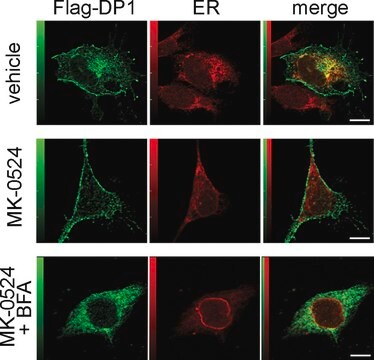MABF949-SF
Anti-Rabies Virus Antibody, Serum Free Antibody, clone 1112-1
clone 1112-1, from mouse
Synonyme(s) :
Glycoprotein, Glycoprotein Rabies virus
About This Item
Produits recommandés
Source biologique
mouse
Forme d'anticorps
purified antibody
Type de produit anticorps
primary antibodies
Clone
1112-1, monoclonal
Espèces réactives
rabies virus, virus
Conditionnement
antibody small pack of 25 μg
Technique(s)
ELISA: suitable
flow cytometry: suitable
neutralization: suitable
Isotype
IgG1κ
Numéro d'accès UniProt
Modification post-traductionnelle de la cible
unmodified
Description générale
Spécificité
Immunogène
Application
ELISA Analysis: A representative lot detected Rabies Virus, Serum Free in ELISA applications (Morgeaux, S., et. al. (2017). Vaccine. 35(6):966-971).
Qualité
Flow Cytometry Analysis: 2 µg of this antibody detected Rabies Virus, Serum Free in L929 cells expressing Rabies virus glycoprotein.
Description de la cible
Forme physique
Autres remarques
Vous ne trouvez pas le bon produit ?
Essayez notre Outil de sélection de produits.
En option
Certificats d'analyse (COA)
Recherchez un Certificats d'analyse (COA) en saisissant le numéro de lot du produit. Les numéros de lot figurent sur l'étiquette du produit après les mots "Lot" ou "Batch".
Déjà en possession de ce produit ?
Retrouvez la documentation relative aux produits que vous avez récemment achetés dans la Bibliothèque de documents.
Notre équipe de scientifiques dispose d'une expérience dans tous les secteurs de la recherche, notamment en sciences de la vie, science des matériaux, synthèse chimique, chromatographie, analyse et dans de nombreux autres domaines..
Contacter notre Service technique